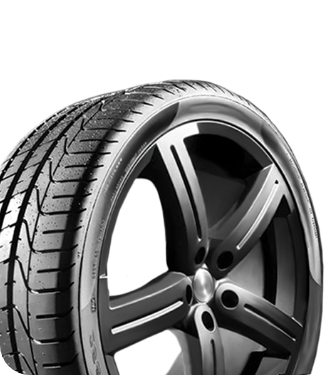

Understanding Tire Ply Rating and Load Capacity
Tires |When it comes to car maintenance, understanding tire ply rating and load capacity can be crucial. These factors directly impact your vehicle’s performance and safety, making them essential knowledge for any car enthusiast, professional driver, or commercial trucker.
Tires are the heroes of our cars. They endure miles of roads, bearing a vehicle’s load while ensuring a smooth, safe ride. But what do those numbers and ratings on the sidewall mean? Keep reading to understand more about two critical measurements for your tire’s strength and durability: ply rating and load capacity.
What Is Tire Ply Rating?
The tire ply rating refers to the number of plies or layers of fabric in a tire’s construction. Back in the day, more plies meant a stronger tire. Now, ply rating doesn’t directly correlate to the actual number of plies but rather the tire’s strength and ability to carry loads.
Manufacturers use ply rating to indicate a tire’s load-carrying capability. For example, a tire with a ply rating of 10 can handle more weight than one with a ply rating of 4. This rating system evolved as materials like nylon, polyester, and steel became common in tire manufacturing, providing more strength with fewer layers.
How To Find a Tire’s Ply Rating
You can find the ply rating of a tire on its sidewall, typically next to the load index and speed rating. The ply rating is always labeled as a number followed by the letter “PR” (e.g., 10PR). The higher the number, the more weight that tire can support.
It’s essential to note that there isn’t an industry standard for assigning ply ratings. Some manufacturers may use different methods for determining a tire’s strength, making it difficult to compare between brands. Additionally, advancements in tire technology have made some tires with fewer plies just as strong as those with higher ratings.

Understanding Load Capacity
Load capacity indicates the maximum weight a tire can support. It’s a critical factor for vehicle safety and performance. Overloading tires beyond their capacity can lead to blowouts or other failures, risking driver and passenger safety.
Calculating load capacity involves understanding the tire’s load index, which is a numerical code associated with the maximum load the tire can carry at a specific pressure. You’ll find the load index on the tire sidewall, typically following the tire size. Higher numbers correspond to greater load capacities.
What Load Capacity Means by Vehicle Type
Different types of vehicles require different load capacities, and it’s crucial to choose tires that can handle your vehicle’s weight. For example:
- Passenger cars typically have a load capacity of 70–110.
- Light trucks and SUVs usually have a range of 100–120.
- Heavy-duty vehicles like commercial trucks may go up to 140 or higher.
Check your vehicle manufacturer’s recommendations for the appropriate load index when choosing tires. Overloading your tires can lead to premature wear and tear, affecting both performance and safety.
Factors Influencing Ply Rating and Load Capacity
Now that we better understand tire ply rating and load capacity, we can dig deeper into the factors that influence the ratings and capacities of the tire.
Vehicle Size and Type
As we mentioned, trucks and SUVs, designed for heavy loads and rugged conditions, often need tires with higher ply ratings and load capacities. In contrast, passenger cars usually require lower ratings.
Tire Size
Tire size also affects these ratings. Larger tires generally support more weight and can have higher ply ratings.
However, this isn’t a rule of thumb, as tire construction and materials also play a part. Modern tires use advanced materials, allowing them to achieve high load capacities with fewer plies.
Inflation Pressure
Inflation pressure is another crucial factor. Properly inflated tires perform better and carry more weight.
Underinflated tires can’t handle their rated capacity, leading to increased wear and the risk of failure. Regularly checking tire pressure ensures your tires operate within their intended load capacities.
How To Use Ply Rating and Load Index To Find Your Car’s Ideal Tires
Choosing the right tires involves combining the ply rating and load index to match your vehicle’s requirements. Start by consulting your vehicle’s manual for the recommended tire specifications. Once you identify the necessary ply rating and load index, you can explore tire options that fit these criteria.
Remember to consider the type of driving you do most often—whether it’s city driving, highway cruising, or off-road adventures. You must pick tires designed to endure your typical conditions while meeting your vehicle’s load needs.

FAQs About Ply Rating and Load Capacity
Can I Use Tires With a Different Ply Rating on My Car?
In most cases, it’s best to stick with the recommended ply rating for your vehicle, as this ensures optimal performance and safety. However, if you need to replace a damaged tire in an emergency, using one with a slightly different ply rating is acceptable as long as it’s within the manufacturer’s guidelines.
Always check your vehicle’s manual for specific recommendations and consult with a professional if you’re unsure. Also, ensure that the temporary replacement tire is compatible in other aspects, such as size and speed rating, to avoid other complications.
Does Load Capacity Affect Tire Performance?
Yes, load capacity directly affects tire performance. Overloading tires can cause them to overheat, leading to increased wear and tear and a higher risk of failure. It’s crucial to choose tires with the appropriate load index for your vehicle to ensure safe and optimal driving.
Common Misconceptions about Ply Rating and Load Capacity
More Plies Mean a Stronger Tire
As we mentioned earlier, modern tire technology has made this statement false. The number of plies in a tire does not directly correlate to its strength or load capacity.
Advances in materials and engineering have allowed manufacturers to enhance tire performance through other means, such as improved rubber compounds and innovative tread designs. Consequently, the strength and load capacity of a tire now depend on a combination of factors rather than just the number of plies.
Load Capacity Is Only Important for Heavy Vehicles
Load capacity is an important factor for all vehicles, regardless of size or weight. Overloading tires beyond their capacity is dangerous and negatively affects vehicle performance. Therefore, make sure you choose tires with an appropriate load index for your specific vehicle.
Find the Best Tires for Your Car at RNR Tire Express
Now that you better understand the ins and outs of these important tire measurements, you’re ready to select the ideal rubber for your vehicle. Our tire experts at RNR Tire Express are ready to help you find tires in Corpus Christi or one of our many other tire shops nationwide. Visit RNR Tire Express today to find the perfect tires for your car.





